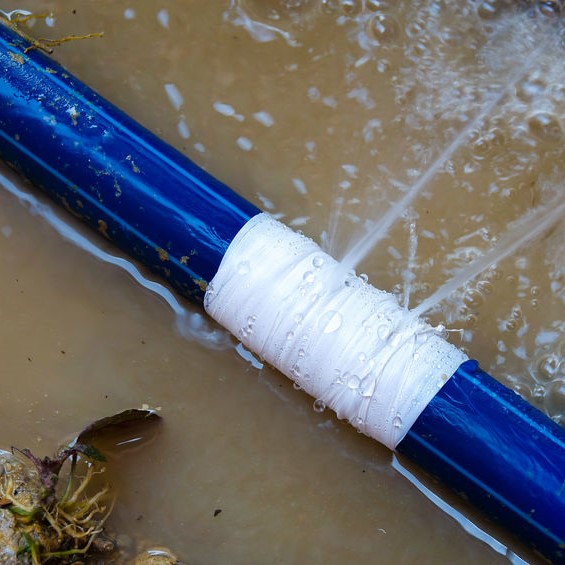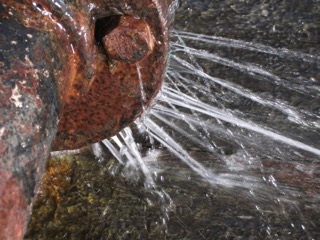The Complete Guide on Everything You Need to Know About Septic Tank Maintenance
The Complete Guide on Everything You Need to Know About Septic Tank Maintenance
Blog Article
We've come across this article involving Do’s And Don’ts In Case Of Water Damage directly below on the net and thought it made good sense to write about it with you on this page.

What should you do if a water pipeline bursts in your house? The longer you wait, the more severe the damages that can occur to your home. For these reasons, you require to find out just how to act in the event of a burst water pipeline.
Turn off the Main Waterline Valve
The first thing to do? Shut the shut-off valve. Look for the neighborhood shut-off shutoff to turn off the water in one specific location only. If you don't recognize where the localized shut-off shutoff is, choose the main water line shutoff as well as turn it off. This step will certainly remove the water instantly in your entire house. Generally, the main shutoff is discovered outside the residence beside the water meter. If it's not there, you can also discover it in 2 locations: in the cellar at eye level or the first flooring on the ground. Typically, home builders put the shut-off shutoff generally ground level shower room or best beside it.
Call Water Damages Remediation Pros for Aid
After closing the water source, call the experts for help. This scenario is not something you can do some DIY due to the fact that the pipes required to be repaired and also there is a need to attend to the other damages to your residential property. Seek assistance from a trustworthy company providing 24/7 emergency solutions if you can not deal. With their expert assistance, you can protect against much larger water damage including distorted baseboards, loosened floor tiles, or harmed structures. Don't take this problem lightly as well as look for specialist assistance for your complete satisfaction as well as a qualified solution.
Paper the Damages For Insurance policy
While you're awaiting the pros to get here, obtain some documents of the damages brought on by the wayward pipeline. Take images and also video clips of every little thing. Do close-up shots of the harmed prized possessions and also areas. Your paperwork will certainly work as evidence for your property owner's insurance coverage. Keeping proactive with this situation aids you to sue for protection, which will even more sustain you as well as your household to get back on your feet.
Restore Things That Can Be Saved
Examine the harmed products as well as take out the most essential ones from the stack as soon as you're done taking photos. Dry them off in a dry/warm place away from the broken area and attempt to protect them as much as you can. Drag as much dampness as you can to the product so it can begin to dry out.
Beginning the Drying Process
You need to begin the drying process asap. Luckily, the water from your waterlines is already tidy so you don't have to bother with drain water. However, the moving water may have disturbed the dirt as well as debris in your floorboards as well as carpets. In this instance, put some gloves on and also begin some damage control. Usage containers to unload out the water. Remove as much water as you can from the surfaces with old towels. Turn on an electrical fan or open your windows to promote air blood circulation. These steps will certainly speed up to completely dry and hinder mold and also mildew development.
Experts are the only individuals certified to analyze properly and repair the burs pipelines and succeeding damages. They normally offer silent red flags like gurgling paint, water stains.
What should you do if a water pipeline ruptureds in your home? For these factors, you need to find out how to act in the occasion of a ruptured water pipe. After closing the water source, call the experts for help. With their professional assistance, you can prevent much bigger water damage including deformed baseboards, loose ceramic tiles, or harmed structures. Luckily, the water from your waterlines is currently clean so you don't have to stress about drain water.
How to Handle a Burst Pipe and Minimize Damage
Steps to Take Ahead of Time
If you own property in an area that experiences cold weather, you need to be aware of seasonal maintenance tasks that will help you protect your property as the weather changes each year. One of the most important steps is to winterize your pipes to ensure they won't freeze or burst when the temperature drops. This includes action items like insulating any exposed pipes, detaching garden hoses and covering outdoor faucets. If the weather gets cold enough, you may even consider leaving a faucet dripping or opening cabinet doors during the coldest parts of the day.
No matter how prepared you might be, accidents and emergencies still happen. You'd be wise to set up a savings account specifically for your property so you have a "rainy day" fund set aside for unexpected expenses. All homes—regardless of age, location or condition—will inevitably need some form of emergency repair.
Steps to Take for Frozen Pipes
A frozen pipe will not necessarily burst, so if you can catch a frozen pipe early on, you could save yourself a major headache. When your area experiences frigid temperatures, be sure to check your plumbing and keep an eye out for warning signs like faucets only releasing small amounts of water or toilets not refilling when flushed. If you do run into one of these issues, you're likely dealing with a frozen pipe.
If this happens, your first step should be to cut off the water supply to that section of the plumbing. Expanding and freezing water can quickly cause damage. Even if the water supply is shut off, you will likely still deal with some leaking from the water that defrosts after the pipe has thawed. Be prepared with a mop, bucket and/or towels to quickly soak up any excess water.
In order to thaw a frozen pipe, you can use a space heater, infrared or incandescent heat lamp, or even a hairdryer to warm up the frozen area. Heat tape is also an option and should be used according to manufacturer instructions. Do not use any sort of open flame to thaw frozen pipes, as it poses a major fire hazard and can damage your pipes further.
Steps to Take for a Burst Pipe
Water damage claims are the second most common insurance claim in the U.S. When you're dealing with a frozen pipe, the water continues to expand as it freezes, which creates pressure that can cause a pipe to burst. When this happens, the crack or leak in the pipe allows water flow from the pipe to enter your home where it shouldn't. If a pipe does burst, you need to act quickly to mitigate property damage and repair cost.
Your very first step should be to shut off your main water supply to minimize flooding—typically the most expensive damage to address. Once you've shut off the water supply, make sure you identify the entire area that has been impacted by the leak. Remove as much water as possible—as quickly as possible—using a mop, sponges, towels or a shop vacuum or wet/dry vacuum. To prevent long-term damage due to moisture build-up, run a dehumidifier or fan in the affected area. Contact a licensed plumber to ensure the pipe is correctly repaired before running any water to that section of the home again. Burst pipes and the associated water damage are something you absolutely want to avoid as a property owner. If you've had to learn your lesson the hard way, don't let yourself get caught in a similar situation during the next spell of cold weather. The best way to deal with frozen or burst pipes is to prevent them in the first place—proactive winter maintenance will save you time, money and a whole lot of stress.

I have been very excited about What You Should And Shouldn’t Do When Dealing With Water Damage and I hope you enjoyed reading the entire entry. If you please take the opportunity to distribute this article if you enjoyed it. I am grateful for your time. Come back soon.
Report this page